Abstract
Quinine dihydrochloride (10 mg or, in two patients, a loading dose of 20 mg kg-1) was infused intravenously over 4 h in ten severely ill but conscious women with falciparum malaria complicating the third trimester of pregnancy. Plasma quinine concentrations, measured spectrophotofluorimetrically after benzene extraction, fitted closely a single exponential decline after the intravenous infusion. These data were therefore fitted to a one compartment model: total apparent volume of distribution, V, 0.96 +/- 0.27 l kg-1 (+/- s.d.), elimination half-time (t1/2,z), 11.3 +/- 4.3 h, total clearance, 1.22 +/- 0.77 ml min-1 kg-1. There was no relationship between arterial blood pressure and plasma quinine concentrations. Eight women delivered of live infants while taking quinine, had placental cord plasma quinine concentrations from 1.0 to 4.6 mg l-1 (mean 2.4) which correlated significantly with maternal plasma quinine concentrations (r = 0.78, t = 3.06, P less than 0.05). The mean (+/- s.d.) ratio of cord plasma to maternal plasma quinine concentration was 0.32 +/- 0.14. Heart blood from a foetus aborted at term had a plasma quinine concentration of 2.8 mg l-1; simultaneous maternal plasma quinine was 7.1 mg l-1 (ratio 0.39). Breast milk quinine concentrations and milk to plasma ratios were 0.5-3.6 mg l-1 (mean 2.6) and 0.11-0.53 (mean 0.31) in twenty-five women who were breast-feeding and had taken oral quinine sulphate for 1-10 days (mean 4.0). Five women with more serious infections received intravenous quinine; breast milk quinine concentrations ranged between 0.5 and 8.0 mg l-1 (mean 3.4).(ABSTRACT TRUNCATED AT 250 WORDS)
Full text
PDF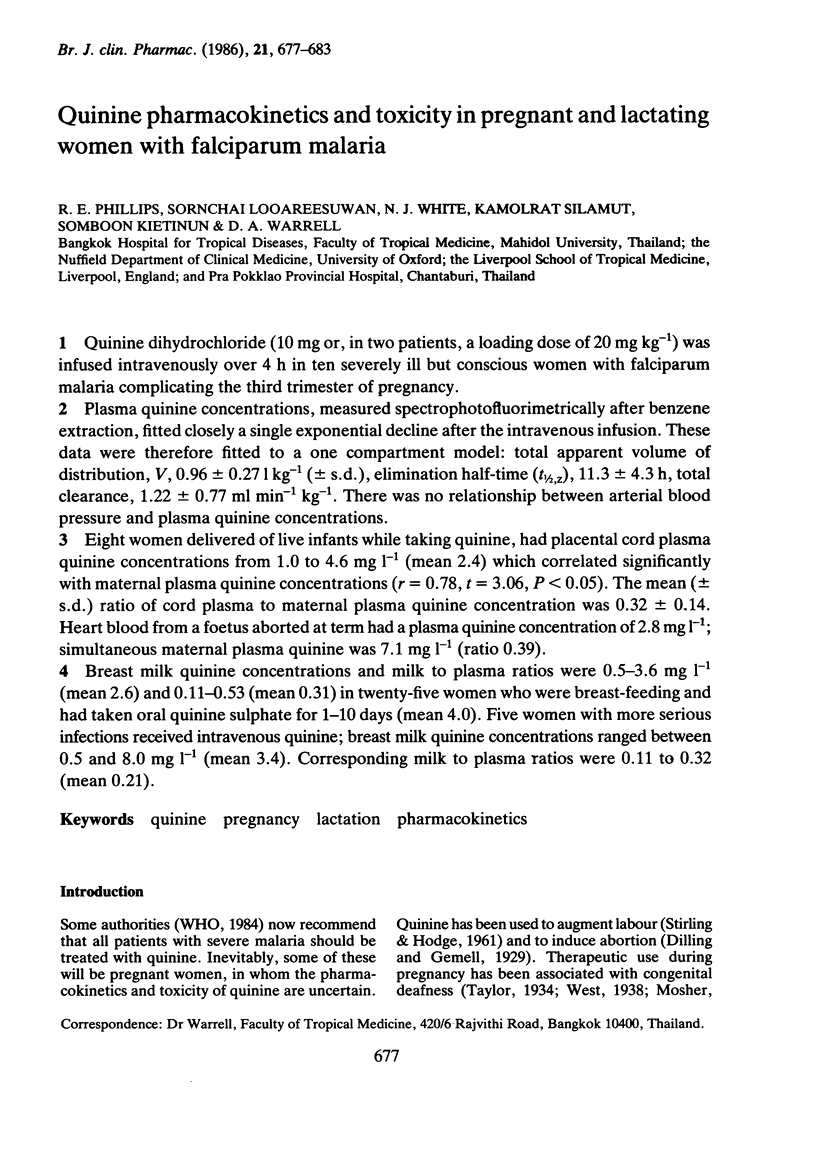
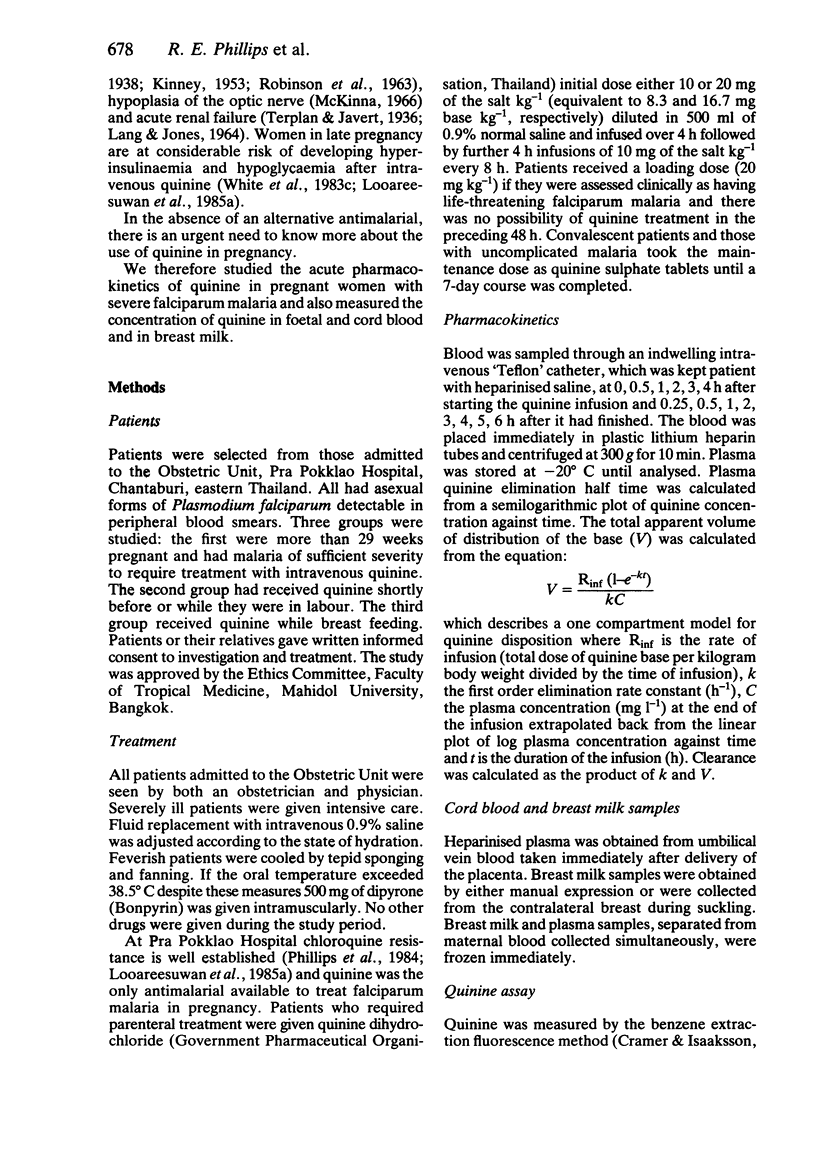
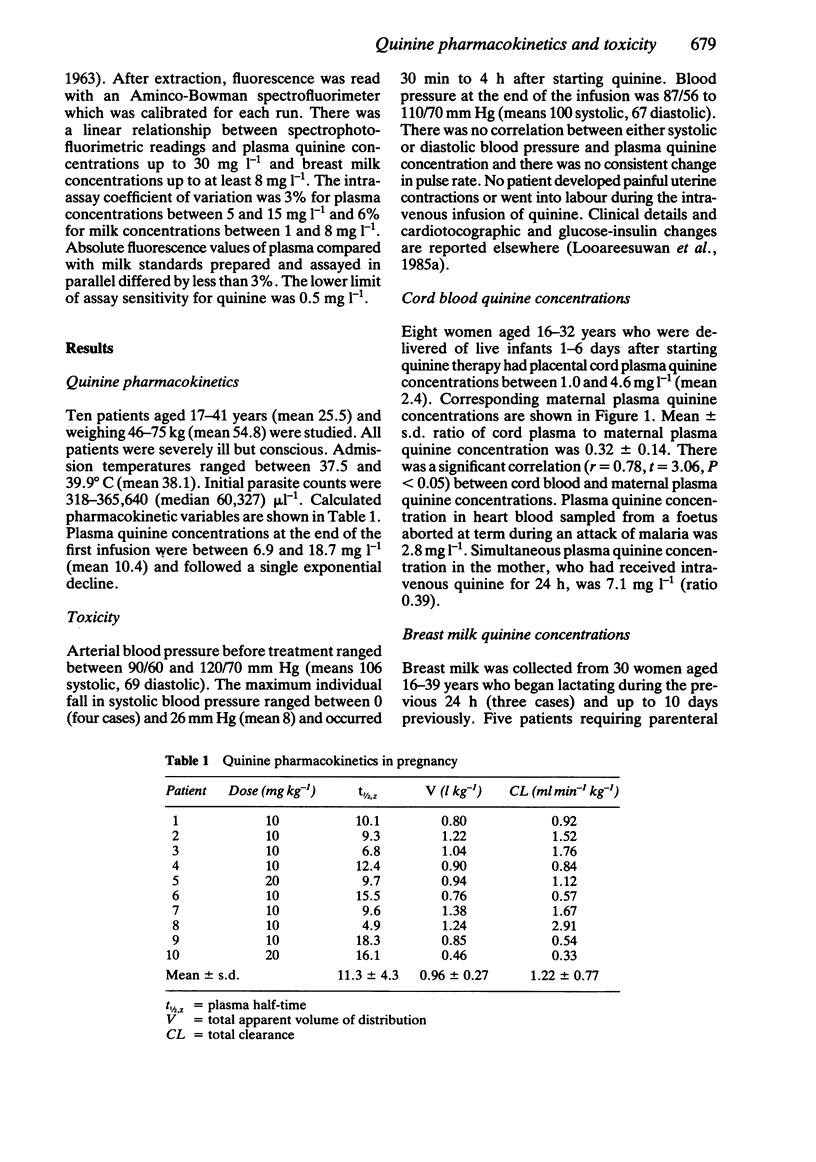
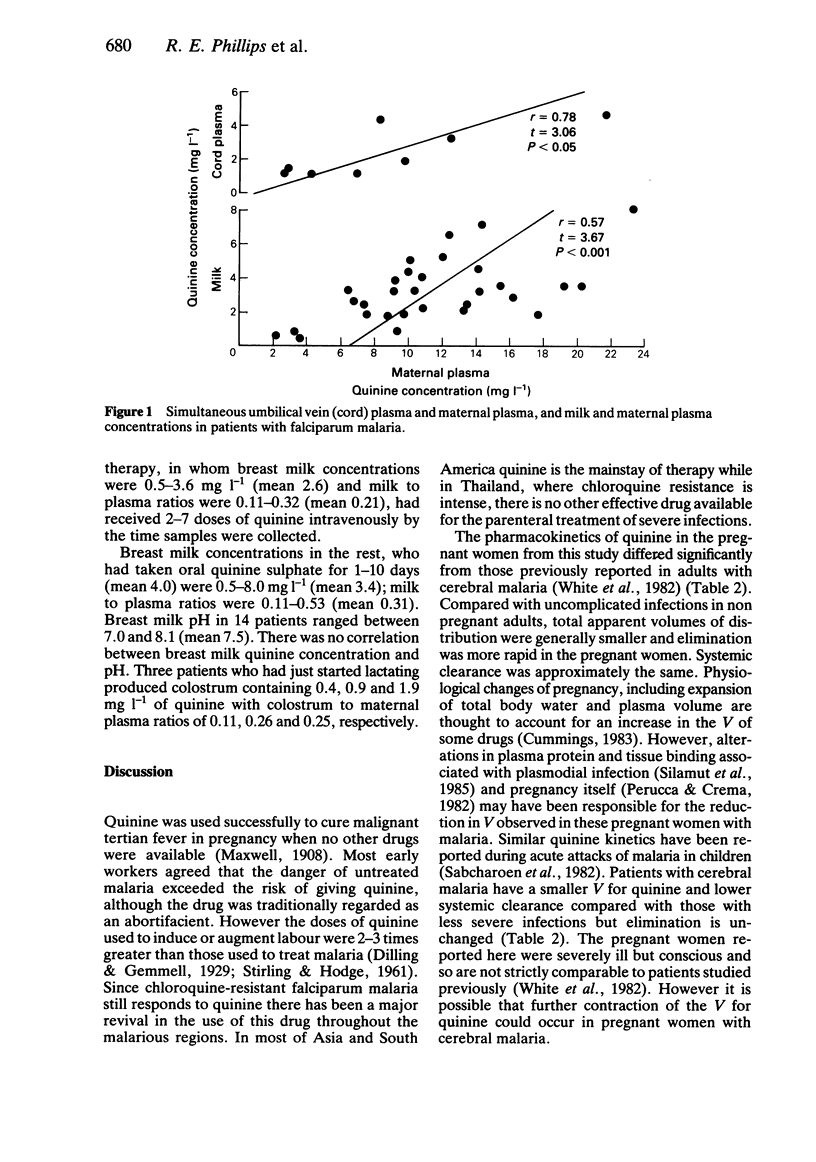
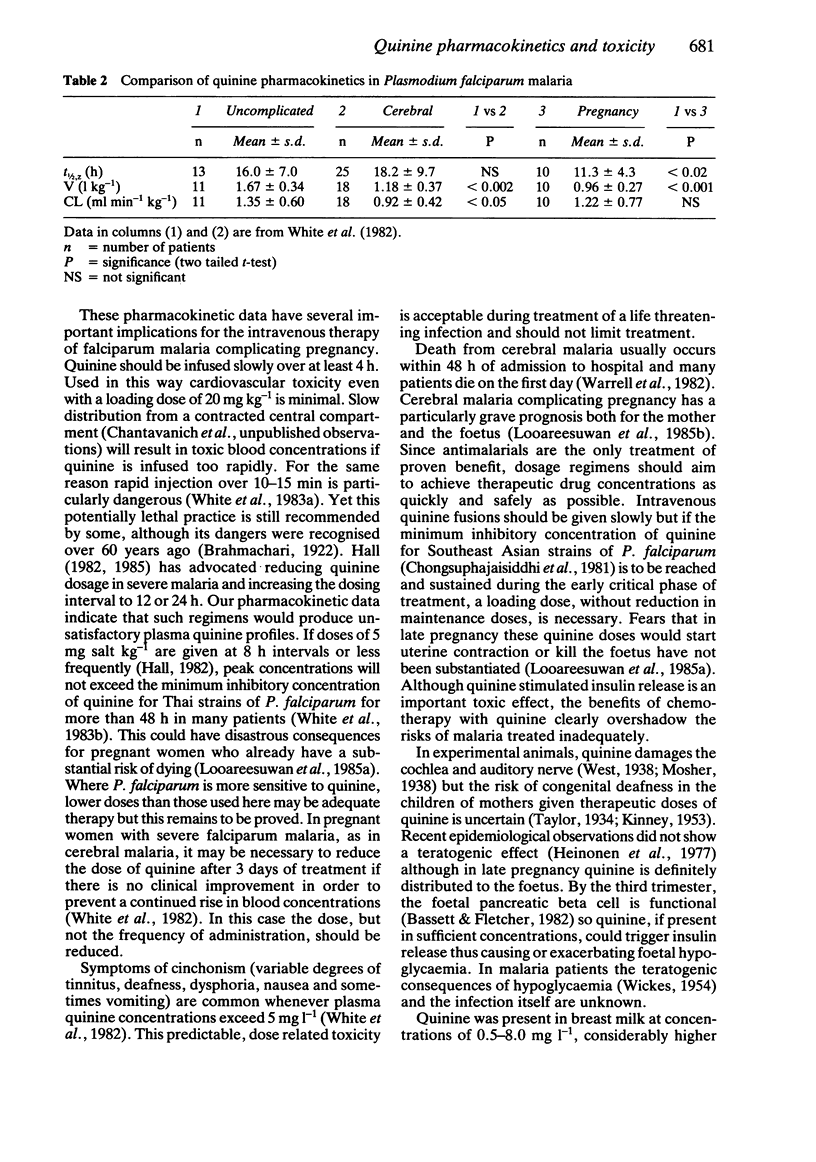
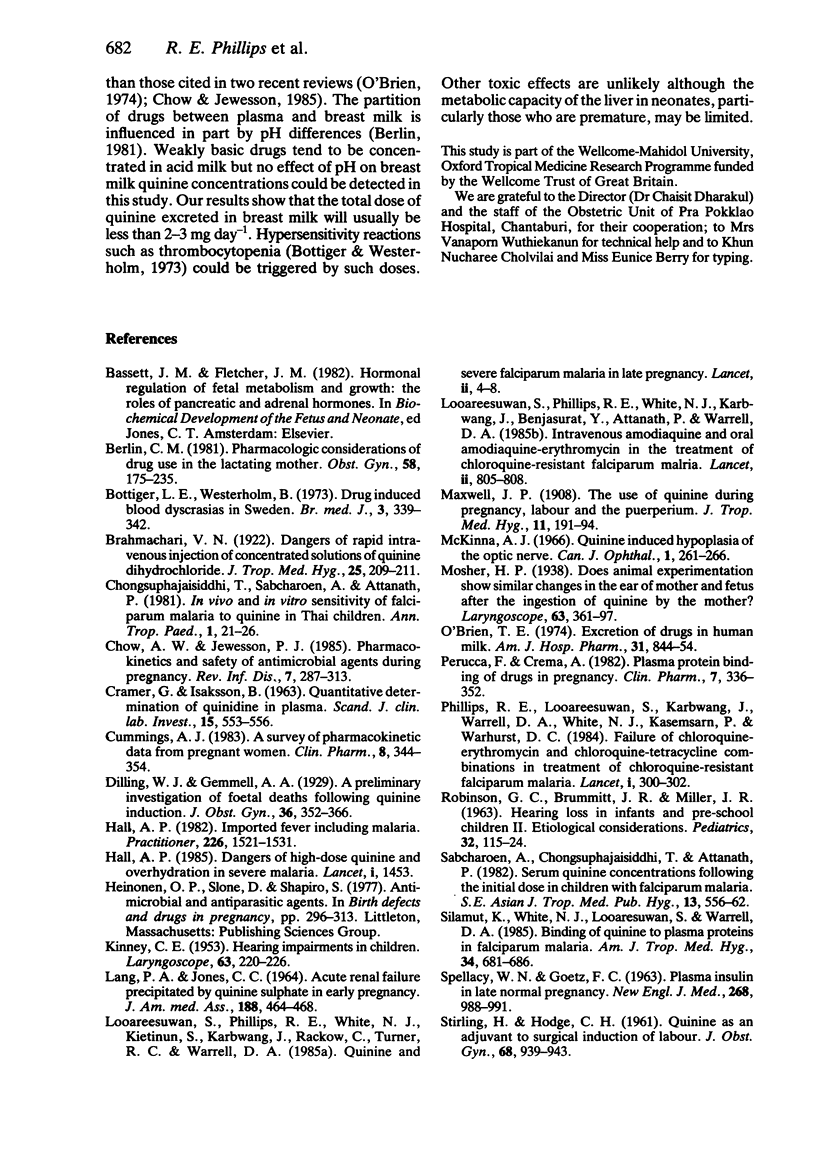
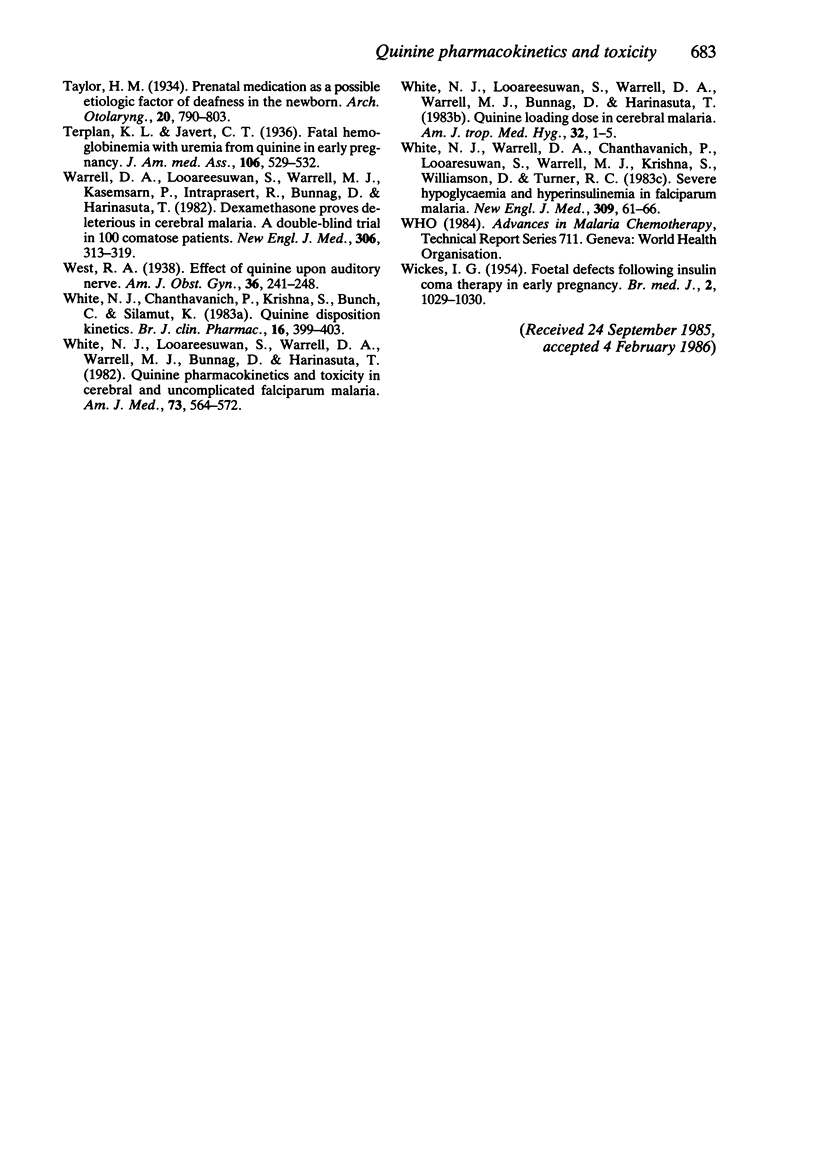
Selected References
These references are in PubMed. This may not be the complete list of references from this article.
- Böttiger L. E., Westerholm B. Drug-induced blood dyscrasias in Sweden. Br Med J. 1973 Aug 11;3(5875):339–343. doi: 10.1136/bmj.3.5875.339. [DOI] [PMC free article] [PubMed] [Google Scholar]
- CRAMER G., ISAKSSON B. QUANTITATIVE DETERMINATION OF QUINIDINE IN PLASMA. Scand J Clin Lab Invest. 1963;15:553–556. doi: 10.1080/00365516309079786. [DOI] [PubMed] [Google Scholar]
- Chongsuphajaisiddhi T., Sabcharoen A., Attanath P. In vivo and in vitro sensitivity of Falciparum malaria to quinine in Thai children. Ann Trop Paediatr. 1981 Mar;1(1):21–26. doi: 10.1080/02724936.1981.11748054. [DOI] [PubMed] [Google Scholar]
- Chow A. W., Jewesson P. J. Pharmacokinetics and safety of antimicrobial agents during pregnancy. Rev Infect Dis. 1985 May-Jun;7(3):287–313. doi: 10.1093/clinids/7.3.287. [DOI] [PubMed] [Google Scholar]
- Cummings A. J. A survey of pharmacokinetic data from pregnant women. Clin Pharmacokinet. 1983 Jul-Aug;8(4):344–354. doi: 10.2165/00003088-198308040-00005. [DOI] [PubMed] [Google Scholar]
- Hall A. P. Imported fever including malaria. Practitioner. 1982 Sep;226(1371):1521–1531. [PubMed] [Google Scholar]
- Hall A. Dangers of high-dose quinine and overhydration in severe malaria. Lancet. 1985 Jun 22;1(8443):1453–1454. doi: 10.1016/s0140-6736(85)91885-9. [DOI] [PubMed] [Google Scholar]
- KINNEY C. E. Hearing impairments in children. Laryngoscope. 1953 Mar;63(3):220–226. doi: 10.1288/00005537-195303000-00004. [DOI] [PubMed] [Google Scholar]
- LANG P. A., JONES C. C. ACUTE RENAL FAILURE PRECIPITATED BY QUININE SULFATE IN EARLY PREGNANCY. JAMA. 1964 May 4;188:464–466. doi: 10.1001/jama.1964.03060310064016. [DOI] [PubMed] [Google Scholar]
- Looareesuwan S., Phillips R. E., White N. J., Karbwang J., Benjasurat Y., Attanath P., Warrell D. A. Intravenous amodiaquine and oral amodiaquine/erythromycin in the treatment of chloroquine-resistant falciparum malaria. Lancet. 1985 Oct 12;2(8459):805–808. doi: 10.1016/s0140-6736(85)90796-2. [DOI] [PubMed] [Google Scholar]
- McKinna A. J. Quinine induced hypoplasia of the optic nerve. Can J Ophthalmol. 1966 Oct;1(4):261–266. [PubMed] [Google Scholar]
- O'Brien T. E. Excretion of drugs in human milk. Am J Hosp Pharm. 1974 Sep;31(9):844–854. [PubMed] [Google Scholar]
- Perucca E., Crema A. Plasma protein binding of drugs in pregnancy. Clin Pharmacokinet. 1982 Jul-Aug;7(4):336–352. doi: 10.2165/00003088-198207040-00004. [DOI] [PubMed] [Google Scholar]
- Phillips R. E., Looareesuwan S., Karbwang J., Warrell D. A., White N. J., Kasemsarn P., Warhurst D. C. Failure of chloroquine-erythromycin and chloroquine-tetracycline combinations in treatment of chloroquine-resistant falciparum malaria in eastern Thailand. Lancet. 1984 Feb 11;1(8372):300–302. doi: 10.1016/s0140-6736(84)90357-x. [DOI] [PubMed] [Google Scholar]
- ROBINSON G. C., BRUMMITT J. R., MILLER J. R. Hearing loss in infants and preschool children. II. Etiological considerations. Pediatrics. 1963 Jul;32:115–124. [PubMed] [Google Scholar]
- SPELLACY W. N., GOETZ F. C. Plasma insulin in normal late pregnancy. N Engl J Med. 1963 May 2;268:988–991. doi: 10.1056/NEJM196305022681805. [DOI] [PubMed] [Google Scholar]
- STIRLING H., HODGE C. H. Quinine as an adjuvant to surgical induction of labour. J Obstet Gynaecol Br Emp. 1961 Dec;68:939–944. doi: 10.1111/j.1471-0528.1961.tb02841.x. [DOI] [PubMed] [Google Scholar]
- Sabchareon A., Chongsuphajaisiddhi T., Attanath P. Serum quinine concentrations following the initial dose in children with falciparum malaria. Southeast Asian J Trop Med Public Health. 1982 Dec;13(4):556–562. [PubMed] [Google Scholar]
- Silamut K., White N. J., Looareesuwan S., Warrell D. A. Binding of quinine to plasma proteins in falciparum malaria. Am J Trop Med Hyg. 1985 Jul;34(4):681–686. doi: 10.4269/ajtmh.1985.34.681. [DOI] [PubMed] [Google Scholar]
- WICKES I. G. Foetal defects following insulin coma therapy in early pregnancy. Br Med J. 1954 Oct 30;2(4845):1029–1030. doi: 10.1136/bmj.2.4895.1029. [DOI] [PMC free article] [PubMed] [Google Scholar]
- Warrell D. A., Looareesuwan S., Warrell M. J., Kasemsarn P., Intaraprasert R., Bunnag D., Harinasuta T. Dexamethasone proves deleterious in cerebral malaria. A double-blind trial in 100 comatose patients. N Engl J Med. 1982 Feb 11;306(6):313–319. doi: 10.1056/NEJM198202113060601. [DOI] [PubMed] [Google Scholar]
- White N. J., Chanthavanich P., Krishna S., Bunch C., Silamut K. Quinine disposition kinetics. Br J Clin Pharmacol. 1983 Oct;16(4):399–403. doi: 10.1111/j.1365-2125.1983.tb02184.x. [DOI] [PMC free article] [PubMed] [Google Scholar]
- White N. J., Looareesuwan S., Warrell D. A., Warrell M. J., Bunnag D., Harinasuta T. Quinine pharmacokinetics and toxicity in cerebral and uncomplicated Falciparum malaria. Am J Med. 1982 Oct;73(4):564–572. doi: 10.1016/0002-9343(82)90337-0. [DOI] [PubMed] [Google Scholar]
- White N. J., Looareesuwan S., Warrell D. A., Warrell M. J., Chanthavanich P., Bunnag D., Harinasuta T. Quinine loading dose in cerebral malaria. Am J Trop Med Hyg. 1983 Jan;32(1):1–5. doi: 10.4269/ajtmh.1983.32.1. [DOI] [PubMed] [Google Scholar]
- White N. J., Warrell D. A., Chanthavanich P., Looareesuwan S., Warrell M. J., Krishna S., Williamson D. H., Turner R. C. Severe hypoglycemia and hyperinsulinemia in falciparum malaria. N Engl J Med. 1983 Jul 14;309(2):61–66. doi: 10.1056/NEJM198307143090201. [DOI] [PubMed] [Google Scholar]


